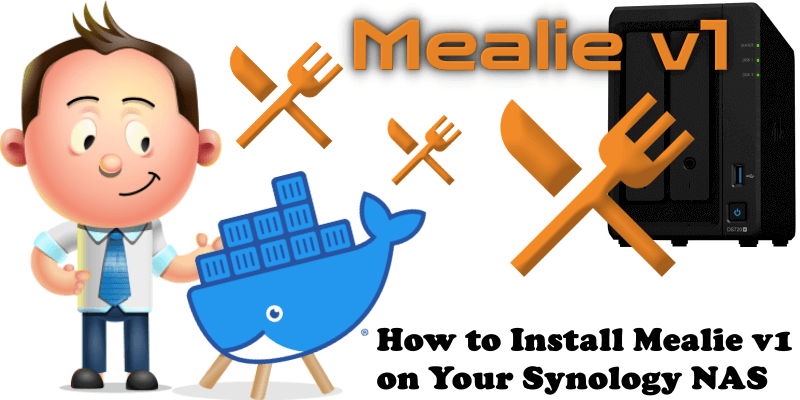
Do you remember my article on how to install Mealie on your Synology NAS? Today I will show you how to install the latest Mealie v1-v2-v3 version on your Synology NAS. Mealie is a self hosted recipe manager and meal planner with a RestAPI backend and a reactive frontend application built in Vue for a pleasant user experience for the whole family. Easily add recipes into your database by providing the URL and Mealie will automatically import the relevant data or add a family recipe with the simple and user-friendly UI editor. Use Mealie this Thanksgiving, Christmas, for New Year or birthday celebrations to help you plan your menu and have all the recipes you’ve been eyeing and itching to try all in the same place. Mealie is an alternative to Tandoor Recipes.
STEP 1
Please Support My work by Making a Donation.
STEP 2
Install Portainer using my step by step guide. If you already have Portainer installed on your Synology NAS, skip this STEP. Attention: Make sure you have installed the latest Portainer version.
STEP 3
Go to File Station and open the docker folder. Inside the docker folder, create one new folder and name it mealie. Follow the instructions in the image below.
Note: Be careful to enter only lowercase, not uppercase letters.
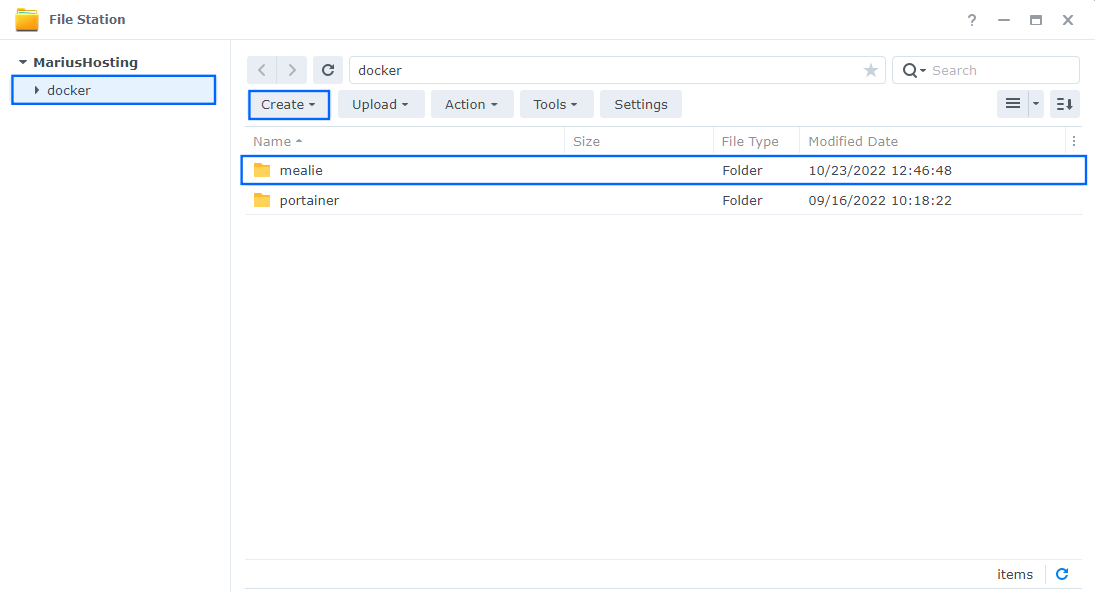
STEP 4
Now create two new folders inside the mealie folder that you created at STEP 3 and name them data and db. Follow the instructions in the image below.
Note: Be careful to enter only lowercase, not uppercase letters.

STEP 5
Follow my step by step guide on how to activate SMTP for your Gmail account. This step is mandatory. Note: If you don’t want to use the easiest way for SMTP with Google and you already have SMTP details from your own Mail Server, you can just skip this STEP and use your personalized email SMTP details instead.
STEP 6
Log into Portainer using your username and password. On the left sidebar in Portainer, click on Stacks then + Add stack. Follow the instructions in the image below.
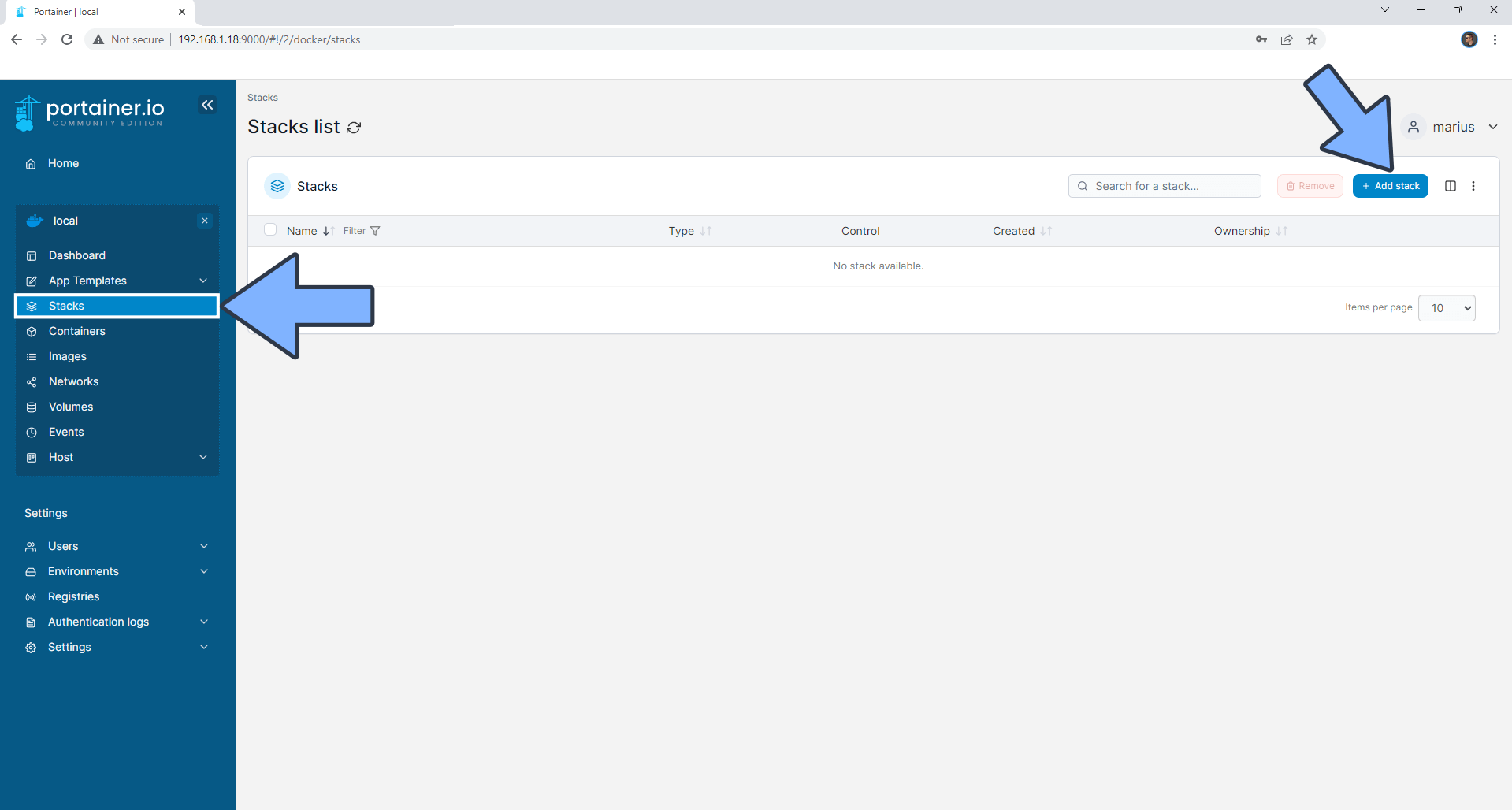
STEP 7
In the Name field type in mealie. Follow the instructions in the image below.
services:
db:
image: postgres:17
container_name: Mealie-DB
hostname: mealie-db
security_opt:
- no-new-privileges:true
healthcheck:
test: ["CMD", "pg_isready", "-q", "-d", "mealie", "-U", "mealieuser"]
timeout: 45s
interval: 10s
retries: 10
volumes:
- /volume1/docker/mealie/db:/var/lib/postgresql/data:rw
environment:
POSTGRES_DB: mealie
POSTGRES_USER: mealieuser
POSTGRES_PASSWORD: mealiepass
restart: on-failure:5
mealie:
image: ghcr.io/mealie-recipes/mealie:latest
container_name: Mealie
hostname: mealie
security_opt:
- no-new-privileges:true
read_only: false
healthcheck:
test: timeout 10s bash -c ':> /dev/tcp/127.0.0.1/9000' || exit 1
interval: 10s
timeout: 5s
retries: 3
start_period: 90s
ports:
- 9925:9000
volumes:
- /volume1/docker/mealie/data:/app/data/:rw
environment:
TZ: Europe/Bucharest
PUID: 1026
PGID: 100
MAX_WORKERS: 1
WEB_CONCURRENCY: 1
ALLOW_SIGNUP: true #or false
BASE_URL: http://192.168.1.18 #or https://mealie.yourname.synology.me
DB_ENGINE: postgres
POSTGRES_USER: mealieuser
POSTGRES_PASSWORD: mealiepass
POSTGRES_SERVER: mealie-db
POSTGRES_PORT: 5432
POSTGRES_DB: mealie
SMTP_HOST: smtp.gmail.com
SMTP_PORT: 587
SMTP_FROM_NAME: Mealie
SMTP_AUTH_STRATEGY: TLS # Options: TLS, SSL, NONE
SMTP_FROM_EMAIL: Your-own-gmail-address
SMTP_USER: Your-own-gmail-address
SMTP_PASSWORD: Your-own-app-password
restart: on-failure:5
depends_on:
db:
condition: service_healthy
Note: Before you paste the code above in the Web editor area below, change the value for TZ. (Select your current Time Zone from this list.)
Note: Before you paste the code above in the Run command area below, change the value numbers for PUID and PGID with your own values. (Follow my step by step guide on how to do this.)
Note: Before you paste the code above in the Web editor area below, change the value for BASE_URL and add your own Synology Local NAS IP. http://192.168.1.18 is my own Synology Local NAS IP. You should add your own Synology Local NAS IP.
Note: Before you paste the code above in the Web editor area below, change the value for SMTP_FROM_EMAIL and type in your own Gmail address. STEP 5.
Note: Before you paste the code above in the Web editor area below, change the value for SMTP_USER and type in your own Gmail address. STEP 5.
Note: Before you paste the code above in the Web editor area below, change the value for SMTP_PASSWORD and type in your own Gmail app password. STEP 5.

STEP 8
Scroll down on the page until you see a button named Deploy the stack. Click on it. Follow the instructions in the image below. The installation process can take up to a few minutes. It will depend on your Internet speed connection.

STEP 9
If everything goes right, you will see the following message at the top right of your screen: “Success Stack successfully deployed“.
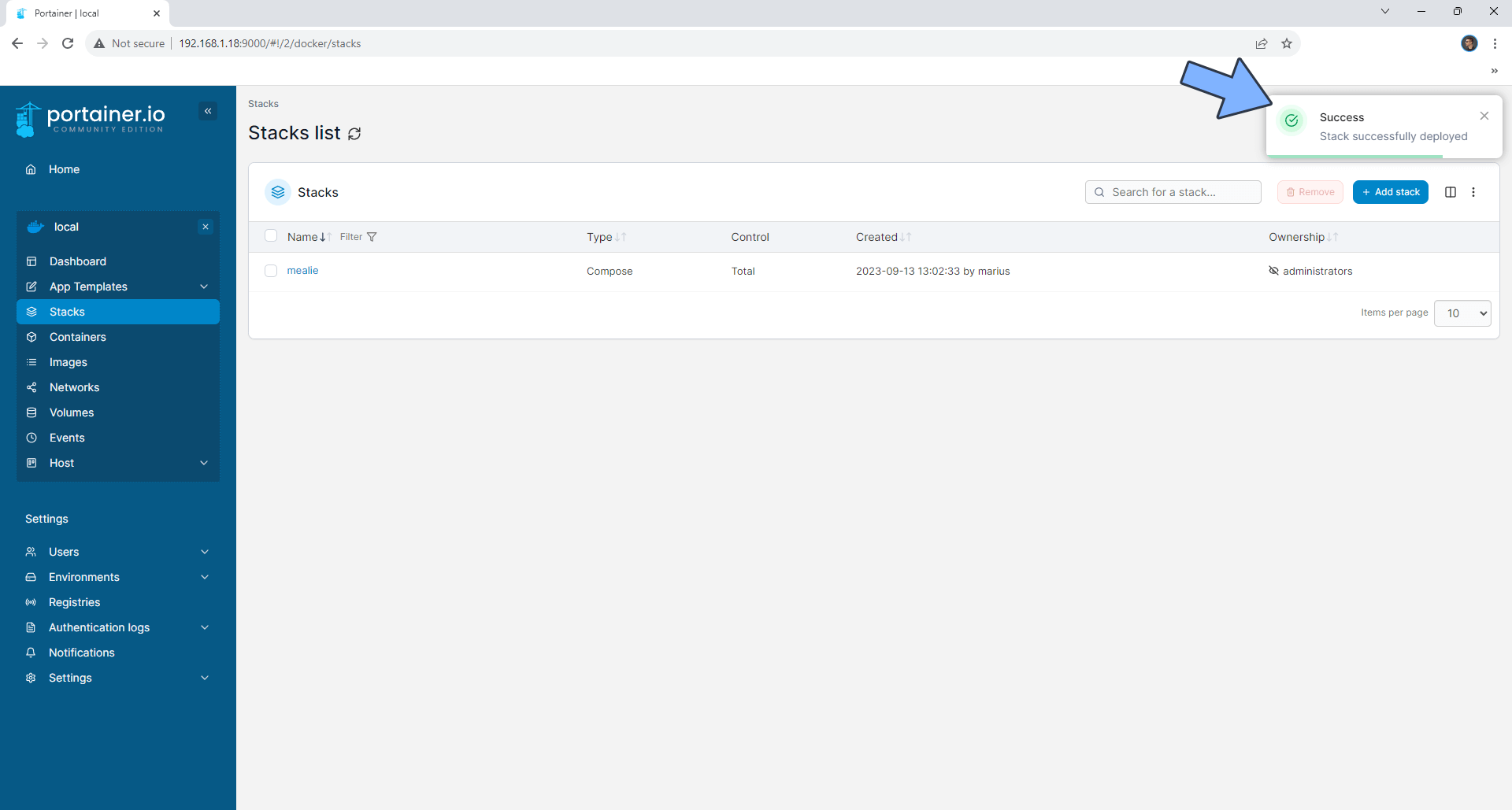
STEP 10
🟢Please Support My work by Making a Donation. Almost 99,9% of the people that install something using my guides forget to support my work, or just ignore STEP 1. I’ve been very honest about this aspect of my work since the beginning: I don’t run any ADS, I don’t require subscriptions, paid or otherwise, I don’t collect IPs, emails, and I don’t have any referral links from Amazon or other merchants. I also don’t have any POP-UPs or COOKIES. I have repeatedly been told over the years how much I have contributed to the community. It’s something I love doing and have been honest about my passion since the beginning. But I also Need The Community to Support me Back to be able to continue doing this work.
STEP 11
The installation process can take up to a few seconds/minutes. It will depend on your Internet speed connection. Now open your browser and type in http://Synology-ip-address:9925 Add the default Email address and Password, then click Sign In. You can change them later. Follow the instructions in the image below.
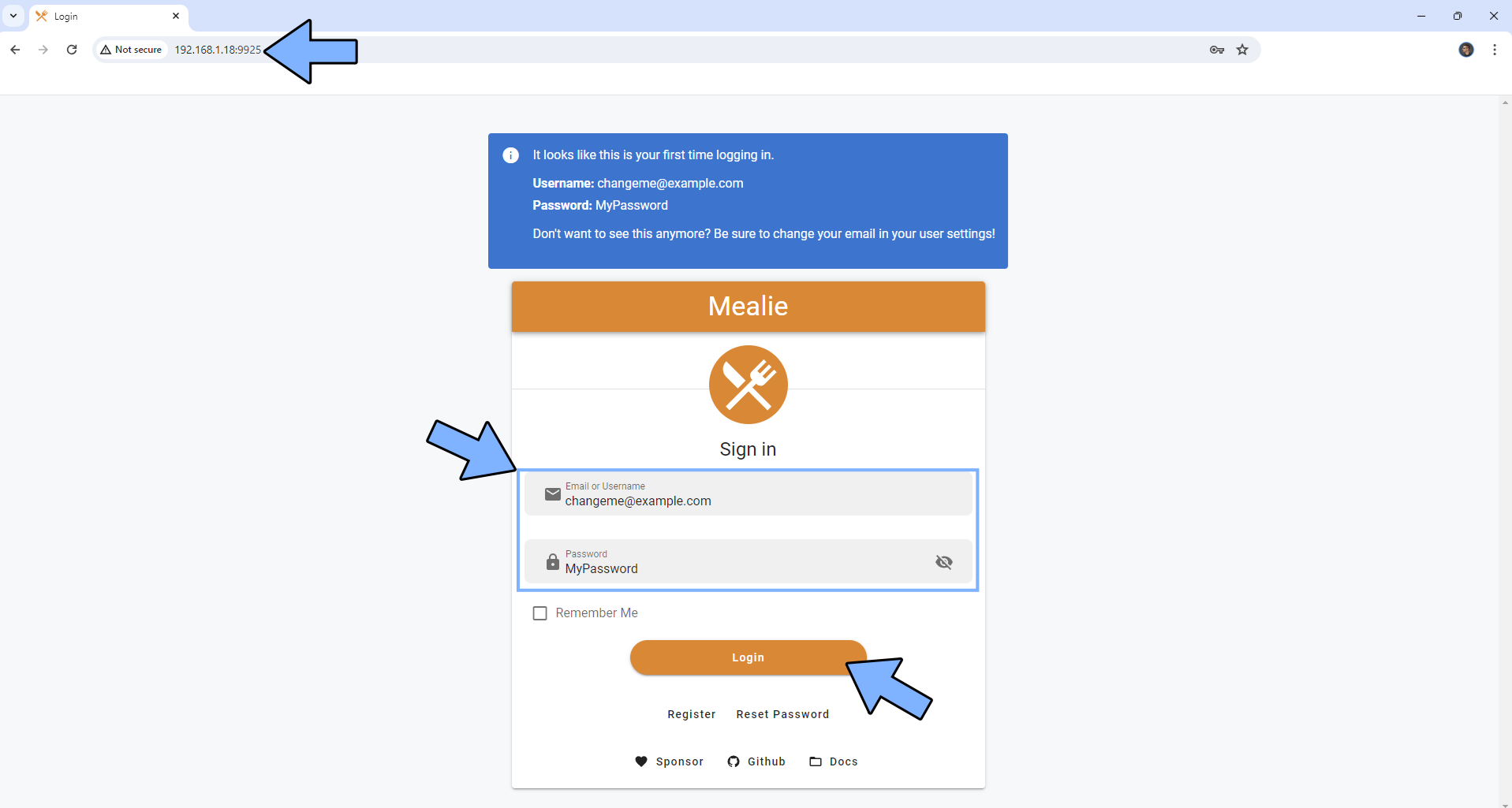
STEP 12
Choose your language. Click Start. Follow the instructions in the image below.

STEP 13
Type in your own details. Click Next. Follow the instructions in the image below.
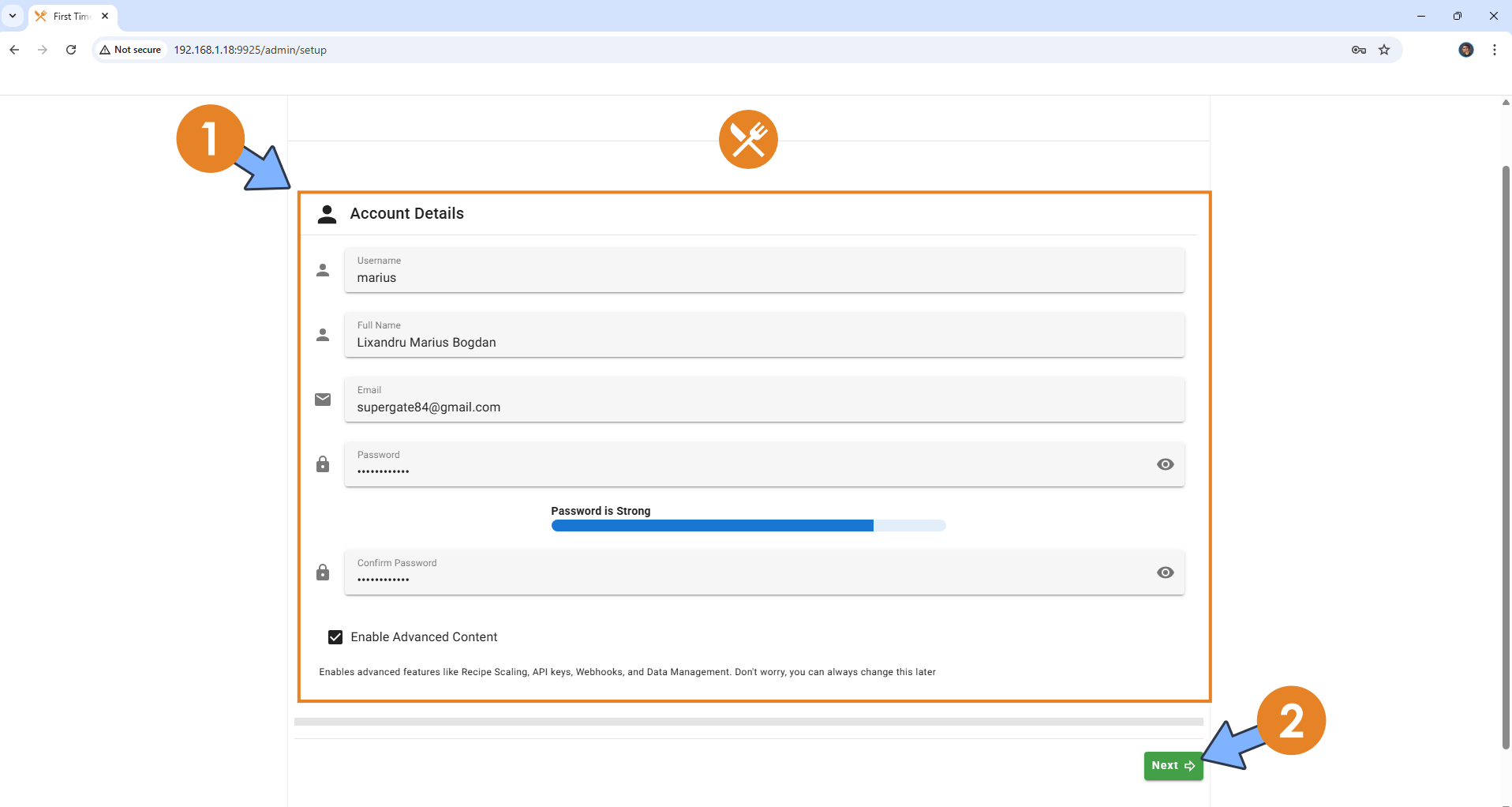
STEP 14
Click Next. Follow the instructions in the image below.
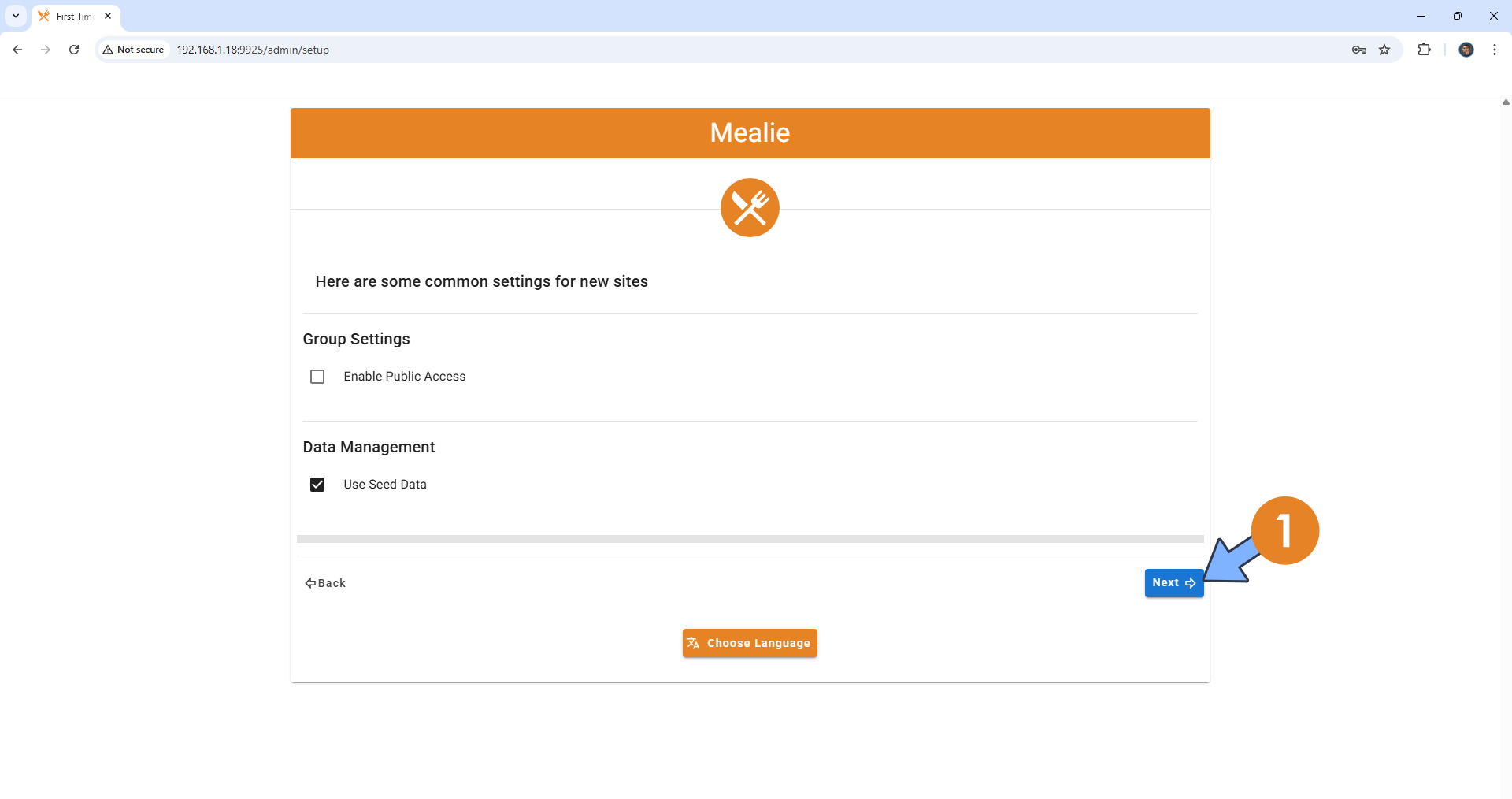
STEP 15
Click Submit +. Follow the instructions in the image below.
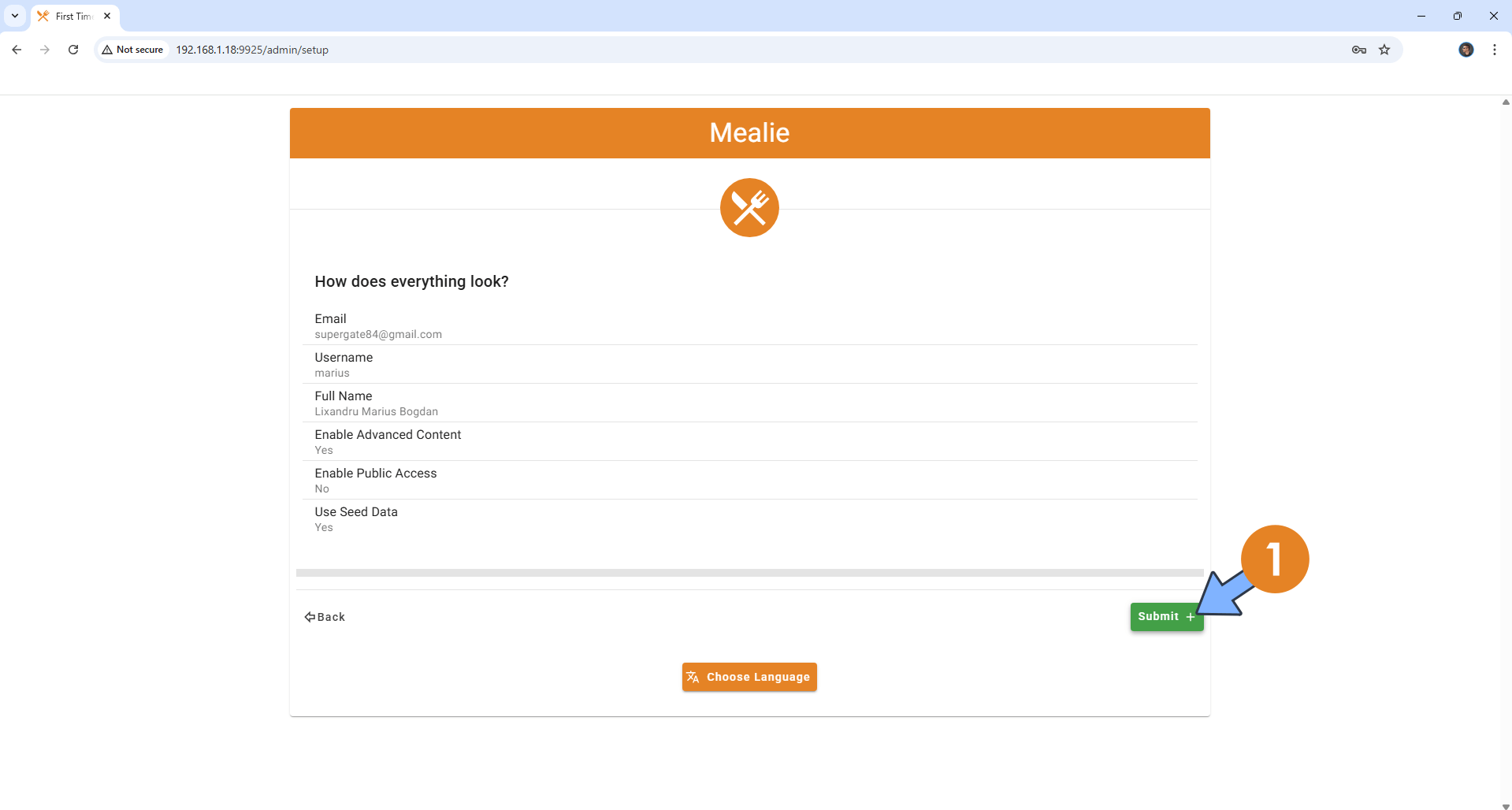
STEP 16
At the top right of the page click the + CREATE then import a recipe by URL button to import recipes from the world wide web. Follow the instructions in the image below.
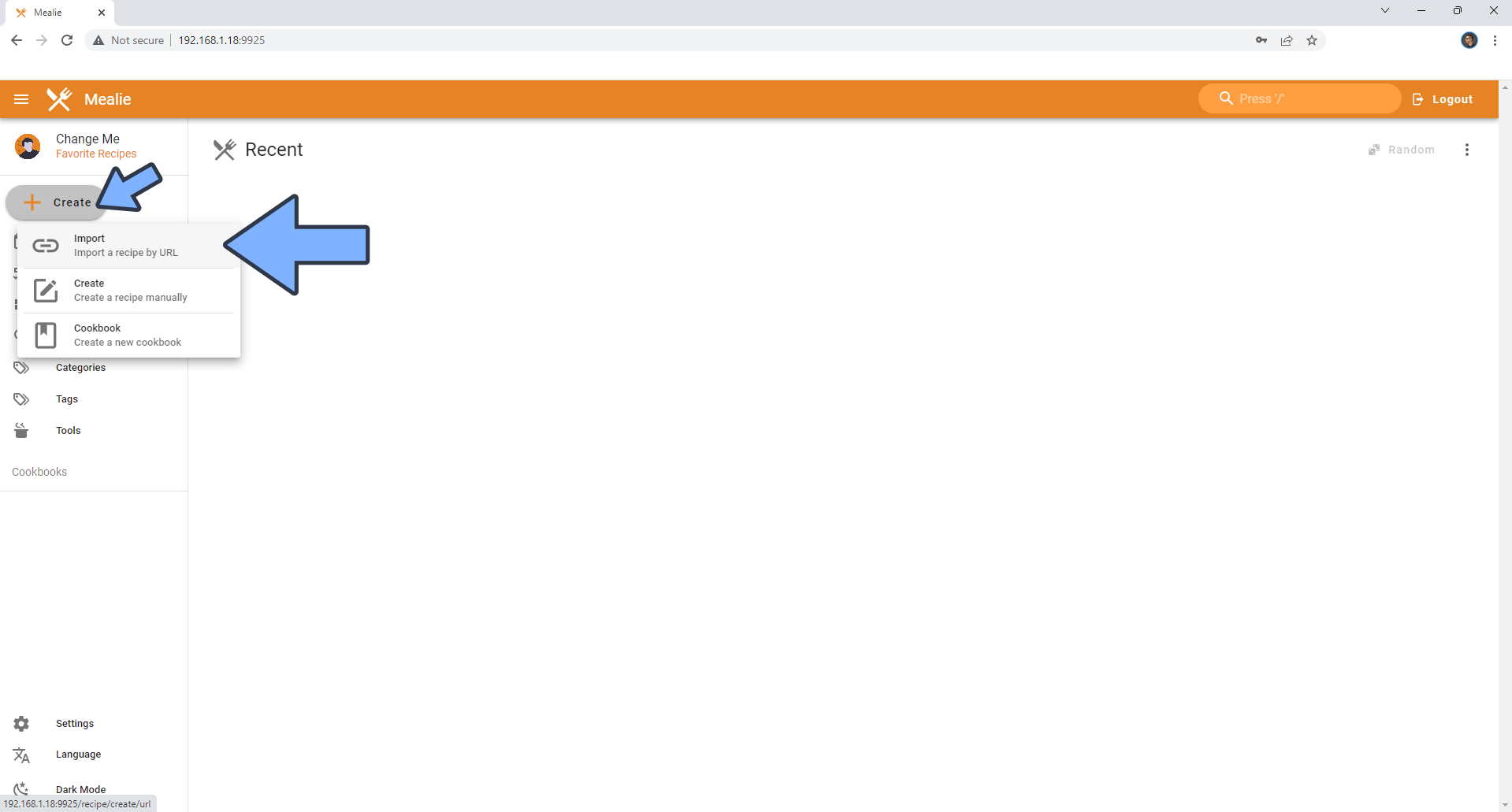
STEP 17
Import a recipe in Mealie by pasting an external URL for a recipe of your choice then clicking + CREATE. Follow the instructions in the image below.
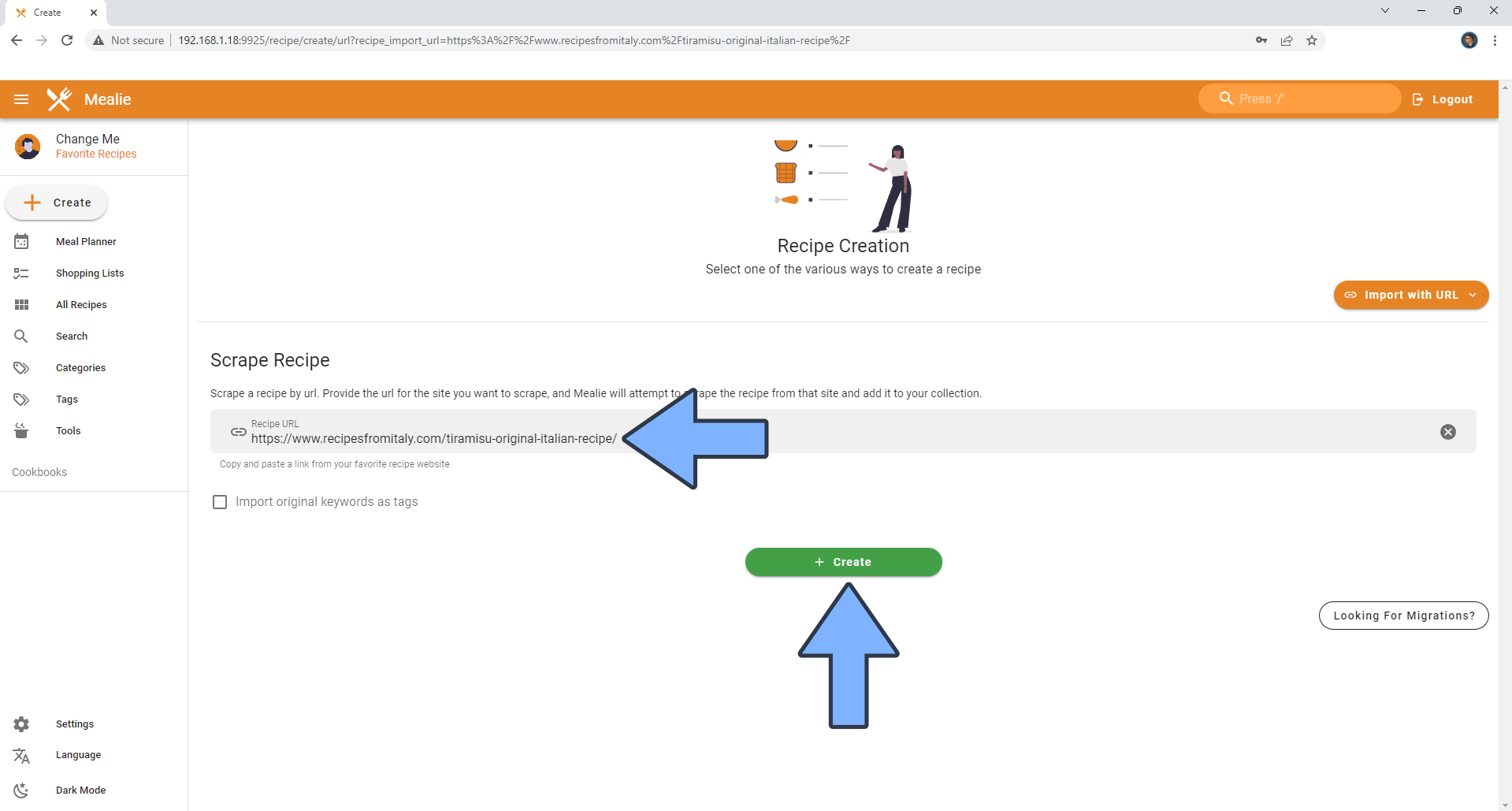
STEP 18
Your Mealie dashboard at a glance!
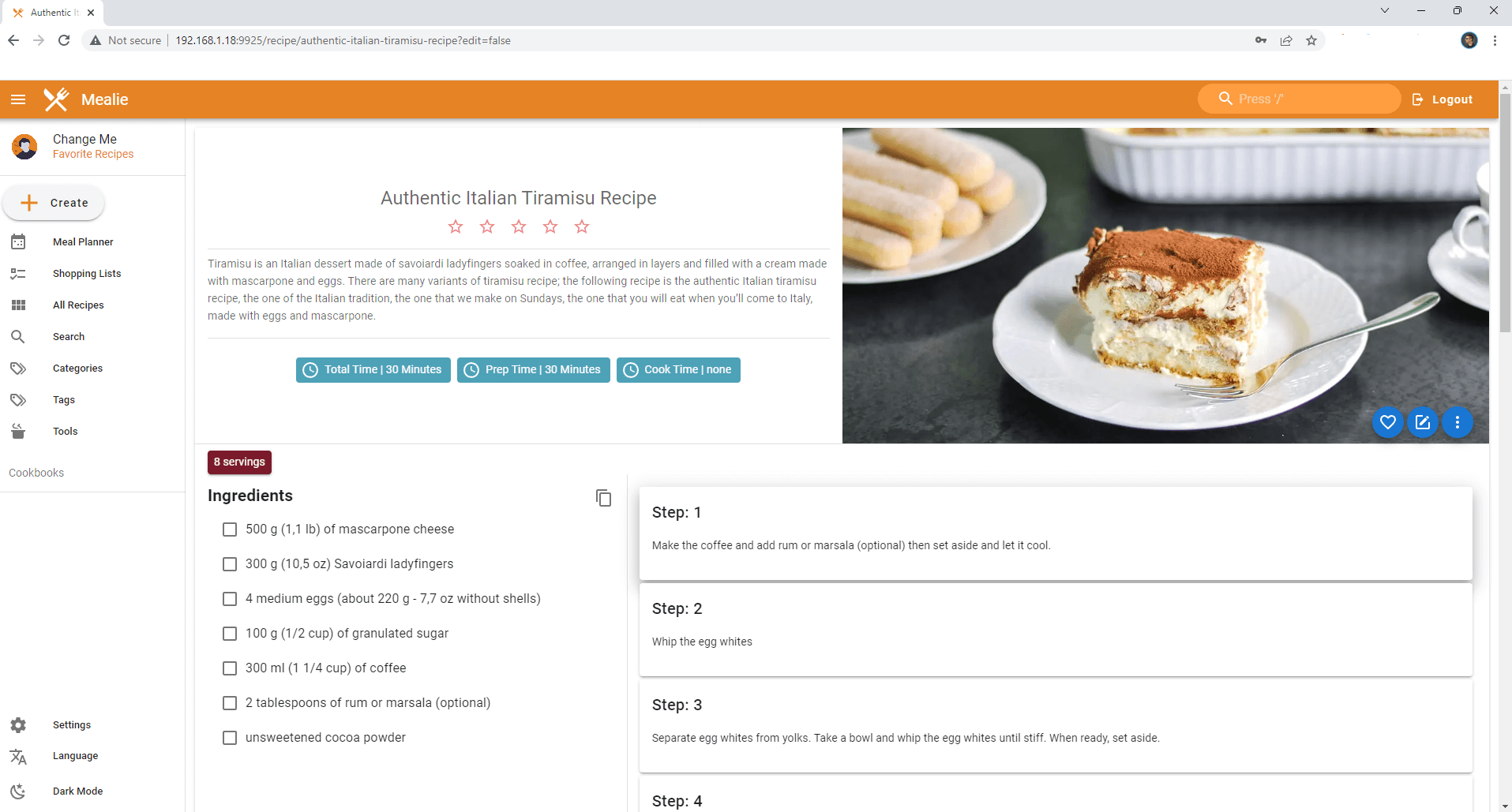
STEP 19
Note: If you want to run the Mealie container over HTTPS, check my guide on How to Run Docker Containers Over HTTPS. In order to make Mealie work via HTTPS, it’s mandatory to activate WebSocket. ⚠️Warning: Also remember to change the BASE_URL environment variable at STEP 7 from BASE_URL=http://192.168.1.18 to BASE_URL=https://mealie.yourname.synology.me
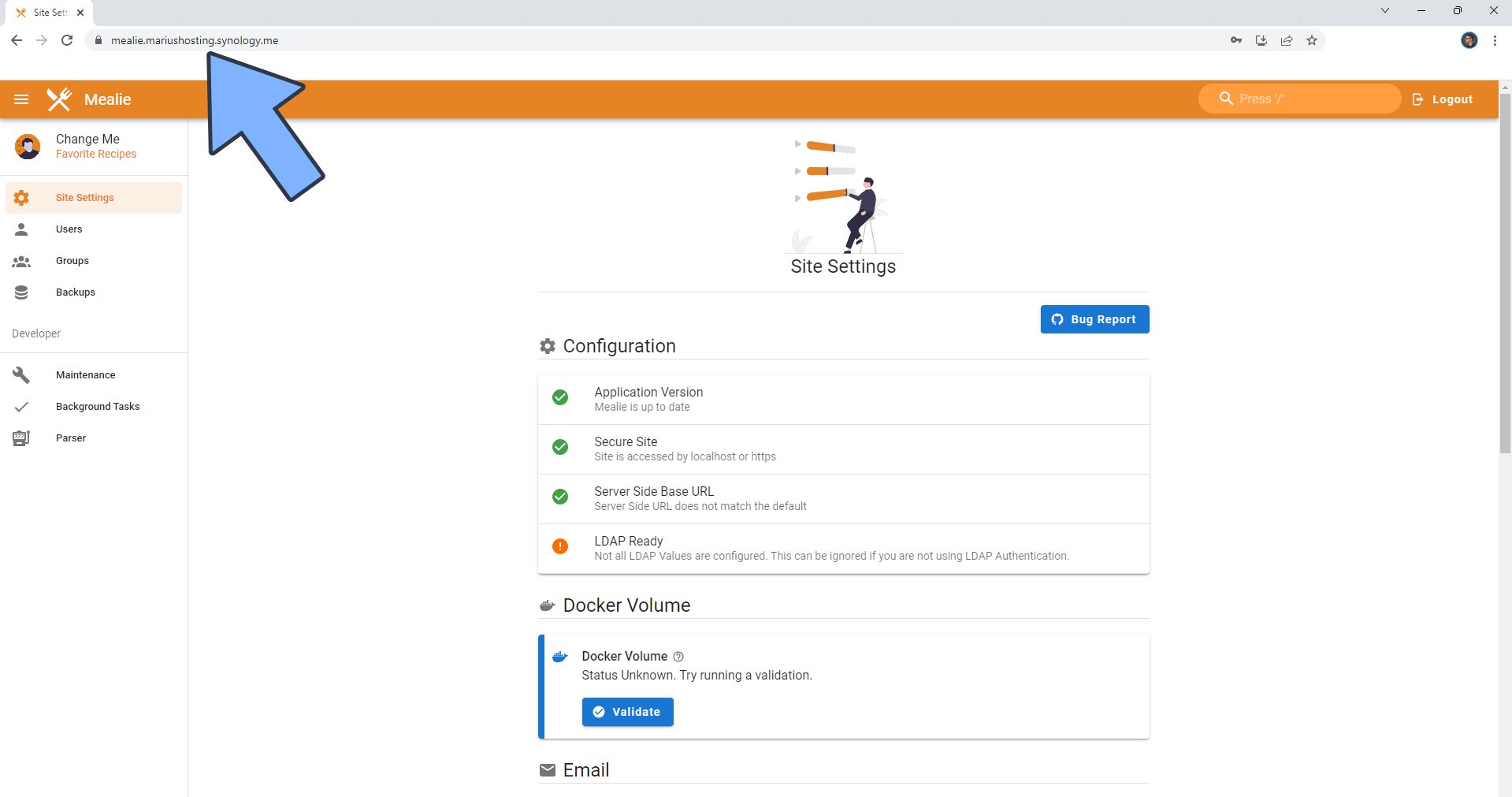
STEP 20
If you want to disable user registration in Mealie, just change the following line in the compose at STEP 7:
ALLOW_SIGNUP: truewith the following one:
ALLOW_SIGNUP: falseClick update the stack to update the settings. From this point on, the register button will disappear from the Mealie homepage.
Enjoy Mealie!
If you encounter issues by using this container, make sure to check out the Common Docker issues article.
Note: Can I run Docker on my Synology NAS? See the supported models.
Note: How to Back Up Docker Containers on your Synology NAS.
Note: Find out how to update the Mealie container with the latest image.
Note: How to Free Disk Space on Your NAS if You Run Docker.
Note: How to Schedule Start & Stop For Docker Containers.
Note: How to Activate Email Notifications.
Note: How to Add Access Control Profile on Your NAS.
Note: How to Change Docker Containers Restart Policy.
Note: How to Use Docker Containers With VPN.
Note: Convert Docker Run Into Docker Compose.
Note: How to Clean Docker.
Note: How to Clean Docker Automatically.
Note: Best Practices When Using Docker and DDNS.
Note: Some Docker Containers Need WebSocket.
Note: Find out the Best NAS Models For Docker.
Note: Activate Gmail SMTP For Docker Containers.
This post was updated on Friday / July 18th, 2025 at 11:07 PM
